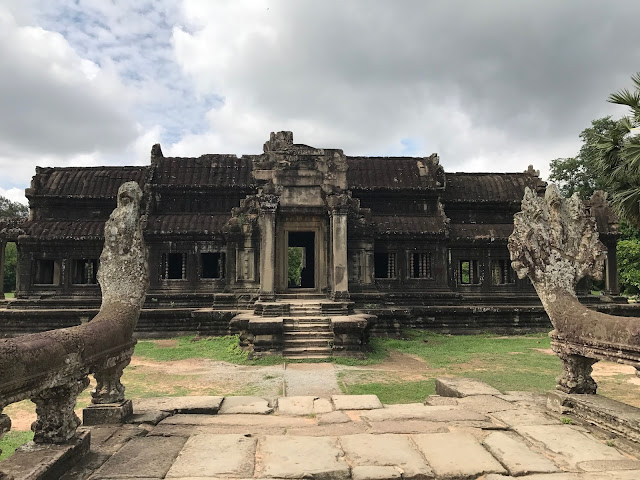Seeing Angkor Wat was really an incredible experience. The small circuit was overwhelming. We were only in Cambodia for two days but it already felt as if we were there for already a month because of the many temples we were able to visit. Some temples might just look like the same but there are those temples that is really different from others.
On our third day in Cambodia our itinerary includes sunrise viewing in Angkor Wat, elephant ride in Bayon and a tour of the Grand Circuit temple.
We have to wake up at 4AM for us to make it on time to see the sunrise in Angkor Wat. We have informed our hotel the day before so they were able to prepare packed breakfast that we will bring and they have coordinated our itinerary with our tuktuk driver.
The time of sunrise depends on the season or time of the year. It is always best to ask the locals about it. Unfortunately for us even though it is dry season in Cambodia there were rains because of climate change. It rained the previous night making it a gloomy morning. The raising sun is covered by gray clouds making a pink to purple color of the sky. You will be surprised that there are a lot of tourists willing to wake up early morning just to see this view.
After seeing the sunrise in Angkor Wat we went to Bayon temple to wait for our elephant ride. We also took this time to have our breakfast and take some rest. The elephant ride opens at 8AM. It costs $20.00 per person for one ride. The elephant took us around the Bayon temple and many tourists took pictures of the elephant while we are riding it.
We headed to do the Grand Circuit tour after our elephant ride. Our first stop was at Preah Khan however i wasn't able to enter the temple because I lost my Angkor Pass. Our tuktuk driver have left us and went to the North Gate of the temple. I told my friends that they can go without me and I'll just wait for them. I went in the East Gate where I waited for my friends. I was able to talk to the guard on the gate and he was able to tell me some historical information about the temple. I can say we had a very good conversation and it was nice to talk to somebody while waiting.
After Preah Khan, we went to buy a one day Angkor Pass so that I can enter the temples. It took us thirty minutes to buy the ticket and get back to the temple ground.
Our next temple was Pre Rup. At Pre Rup we were not only amazed by the temple but also of a phenomenon. Since there were some drizzles in the morning, it formed a sun halo. I was curious of what the tourist are looking at the sky so I look up and see the sun halo. The sun halo lasted for some twenty to thirty minutes.
Pre Rup means "turn the body". There is a common belief among Cambodians that funerals were conducted at the temple, with the ashes of the body being ritually rotated in different directions as the funeral service progressed.
After East Mebon we went to Ta Som. Ta Som is just a small temple so it is just easy to navigate around it. The temple is in ruins and trees and other vegetation are growing in its ruins. In 1998 the World Monument Fund added Ta Som as part of their restoration program.
Pre Rup means "turn the body". There is a common belief among Cambodians that funerals were conducted at the temple, with the ashes of the body being ritually rotated in different directions as the funeral service progressed.
East Mebon is a 19th century temple in Angkor. It is very distinctive for its two-meter-high free-standing stone guardian elephant. The temple was dedicated for the Hindu God Shiva and it honors the parent of the king.
Ta Som is surrounded by moat and enclosed by three laterite walls which are broken by two sets of gopura or entrance ways. The last gopura has a huge fig tree growing in it. It is located at the far end of the temple. There was a sketch artist when we went to Ta Som and he was doing a sketch of the gopura with the fig tree.
Our last temple for the Grand Circuit is Neak Pean. This is a very distinctive temple because it is surrounded by water.
Neak Pean is a Buddhist temple in an artificial island. The temple was originally designed for medical purpose. Visitors cannot get near the temple as it is enclosed by a fence. There were come locals cleaning the pond surrounding the temple on or visit.
That is the end of our temple tour. The Grand Circuit tour is less exhausting compared to the Small Circuit tour. You may do the Grand Circuit after a visit to Angkor Wat because there are lesser temple in this circuit.
































































